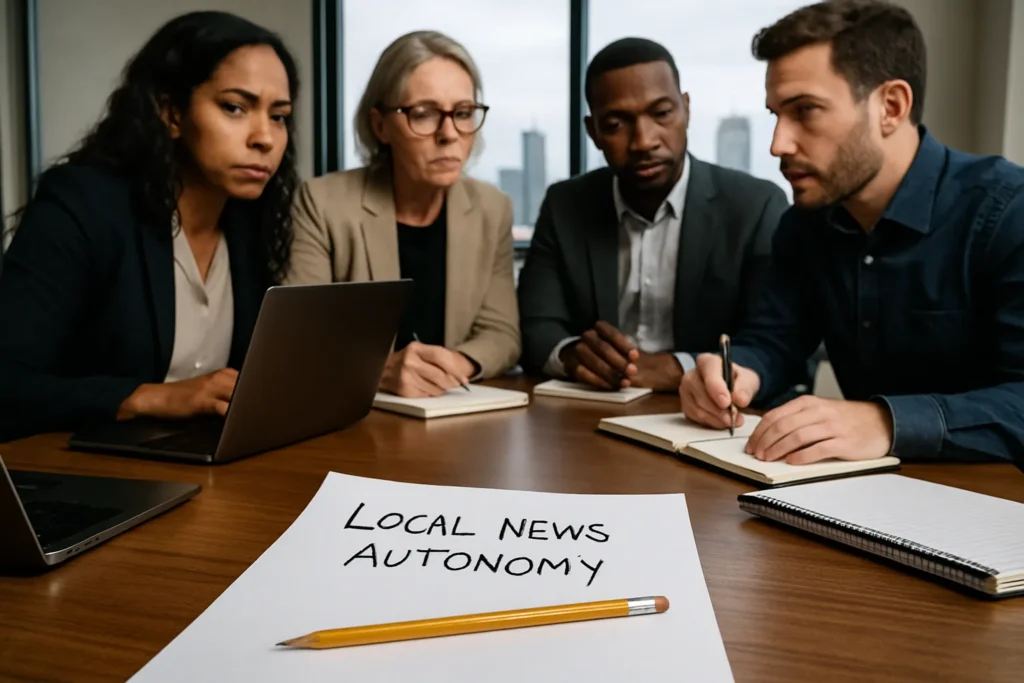Network Power Plays: FCC Investigates Comcast’s Sway Over Local Affiliates
In an era when local newsrooms already face dwindling resources and overpowering national narratives, a sudden federal inquiry into Comcast and NBCUniversal has elevated the stakes for the future of community-focused journalism. The Federal Communications Commission (FCC), under Chairman Brendan Carr, is casting a searching spotlight on whether one of America’s largest media conglomerates is tightening its grip too tightly on local TV affiliates—potentially violating federal regulations intended to sustain independent, public-interest broadcasting.
Beyond that, this probe has revived a crucial debate: Can local broadcasters withstand the financial and operational muscle of giants like Comcast, especially as streaming and digital media continue crowding the once-vibrant airwaves of the nightly local news? According to complaints from station operators across the country, the ability of hometown voices to report neighborhood stories—or to scrutinize power in city hall and school boards—could soon become collateral damage in a consolidation-fueled turf war.
Inside the Inquiry: What’s at Stake for Local TV
FCC Chairman Carr’s formal letter to Comcast CEO Brian Roberts was blunt. The Commission’s Media Bureau, Carr wrote, would closely scrutinize the web of affiliate agreements that bind NBC and Telemundo stations to the parent company, examining whether these contracts undermine station owner independence or stifle their public service obligations. The spark behind this initiative can be traced to complaints about aggressive affiliation renewal negotiations—some alleging direct threats, others pointedly concerned about limitations on digital carriage and the right to make autonomous content decisions.
One anecdote that’s set broadcaster circles abuzz: Detroit’s WDIV-4, the longstanding local NBC affiliate, has reportedly mulled dropping its national branding to strike out solely as ‘LOCAL 4,’ a move interpreted by many as a direct response to the chilling effects of parent network pressure. It’s hardly an isolated incident, but it paints a vivid picture of local stations wrestling for oxygen under the weight of corporate mandates.
FCC rules, on paper at least, are unambiguous: Networks cannot force their affiliates to carry programming that violates public interest or local values. But station groups contend that, off paper, the playing field is anything but level. It’s a struggle echoed in the testimony of station managers, such as those quoted in a recent Columbia Journalism Review survey, who warn that “the threat of retaliation—losing network affiliation or favorable terms—has become the new normal in affiliate negotiations.”
The Larger Battle: Media Consolidation and Public Trust
Scratch beneath the surface, and this isn’t just a contract dispute—it’s a microcosm of democracy’s battle for trusted information. The progressive perspective, grounded in the belief that diverse, independent local voices form the backbone of American civic life, sees the creeping dominance of consolidated media as a fundamental threat. In a landscape where a handful of conglomerates set not just the agenda but the terms and tone of local reporting, what becomes of the watchdog role of local stations?
Expert voices have long warned about the effects of vertical integration in media. Harvard’s Nieman Lab noted in 2022, “When local stations lose autonomy, communities lose the journalism that connects them, and democracy suffers.” Local news, so often the only bridge for everything from severe weather warnings to holding corrupt officials accountable, risks being replaced by canned entertainment or far-off punditry. The FCC’s renewed attention to these risks marks a rare—and necessary—revival of federal scrutiny.
Political sensitivities only sharpen the stakes. This inquiry reportedly gained momentum in part because of an appearance by Vice President Kamala Harris on Saturday Night Live days before the 2024 election, highlighting the intersection of programming control and potential political bias. With public trust in media already fragile—Pew Research found only 16% of Americans have ‘a great deal’ of trust in national news—local outlets cannot afford interference that further erodes their legitimacy.
The Path Forward: Defending Localism in a Fragmented Era
Comcast, for its part, has insisted publicly that it will cooperate fully with the FCC and highlighted its “proud” tradition of supporting affiliates with world-class sports and entertainment content. Yet these reassurances do little to quell the concerns aired by community broadcasters. “We compete fiercely against digital-first outlets and streaming giants,” one general manager argued in testimony captured by the National Association of Broadcasters, “but when our own network parent treats us as branch offices, our mission to inform the public gets lost.”
The dilemma isn’t new. Historians recall the rise of Clear Channel (now iHeartMedia) in the radio sector during the early 2000s, an era that saw thousands of local stations subsumed under cookie-cutter playlists and disconnected from their communities. The backlash that eventually forced more regulatory oversight serves as a pointed warning: letting market power run unchecked rarely yields more diversity or better service for local audiences.
The present FCC investigation signals more than just an administrative exercise. It is a test of whether America still prizes a pluralistic and vibrant public square—one where voices from Jackson, Mississippi to Modesto, California retain the power to cover stories national media simply can’t, or won’t.
“When local stations lose autonomy, communities lose the journalism that connects them, and democracy suffers.”
Anyone concerned about the fate of local news—whether as a journalist, a consumer, or a citizen—should watch this probe closely. The results will almost certainly ripple far beyond the walls of Comcast’s Philadelphia headquarters, shaping the future of what you see, hear, and believe about where you live.
As the investigation unfolds, Americans should demand a media system that puts public service and local accountability before top-down dictate and quarterly profit. The cost of inaction isn’t just fewer locally reported stories; it’s a weakening of the connective tissue that binds communities, informs neighbors, and keeps power in check. In the end, federal scrutiny is no panacea—but at this precarious moment for local journalism, it may be all that stands between truly independent news and a silenced public square.

